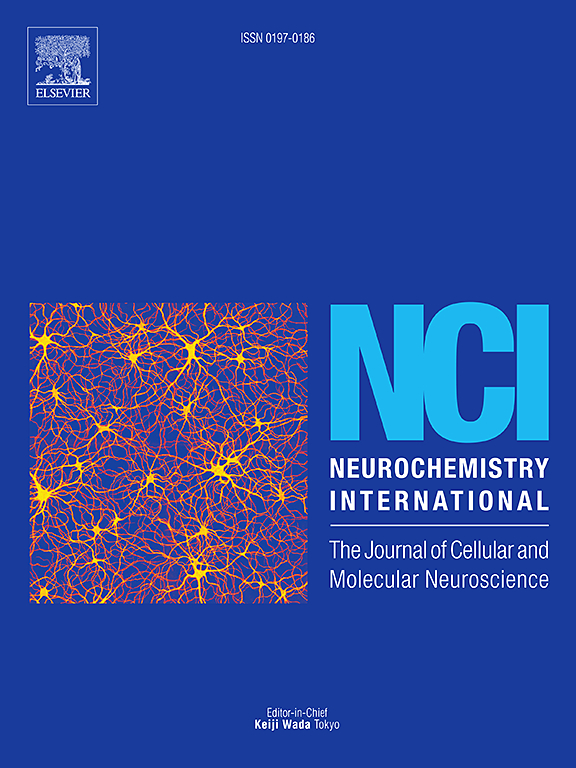小胶质细胞胞外小泡影响缺血性脑卒中预后机制的研究进展。
IF 4
3区 医学
Q2 BIOCHEMISTRY & MOLECULAR BIOLOGY
引用次数: 0
摘要
缺血性中风是中风的主要类型,也是全世界发病率、死亡率和长期残疾的主要原因之一。小胶质细胞在中风中起着复杂而关键的作用。它们是大脑中的初级免疫细胞,可以迅速对中风引起的病理变化作出反应。它们通过多种机制促进缺血性卒中后的神经保护和修复,如激活和极化,与其他细胞(神经元、星形胶质细胞、少突胶质细胞、血管内皮细胞等)的动态相互作用,以及吞噬清除死细胞碎片。在小胶质细胞发挥神经保护作用的多种途径中,细胞外囊泡的分泌是最重要的途径之一。本文就小胶质细胞外囊泡与缺血性脑卒中相关的最新研究进展进行综述,探讨其作用机制,为改善脑卒中预后提供新的策略。为了获得相关文章,我们在Pubmed和Web of Science中进行了全面检索,关键词为缺血性卒中和小胶质细胞来源的细胞外囊泡或外泌体。本综述共纳入59篇文章。已有研究表明,中风发生后,小胶质细胞释放含有蛋白质、核酸、代谢物等的细胞外囊泡。这些囊泡以相应的受体细胞为靶点,通过减少神经元凋亡、抑制神经元自噬、抑制神经元铁凋亡、防止神经元焦亡、减轻炎症反应、减少胶质瘢痕形成、促进髓磷脂再生和修复、促进血脑屏障修复等多种途径,减缓脑卒中的发展,改善脑卒中结局。本文章由计算机程序翻译,如有差异,请以英文原文为准。
Research progress on the mechanisms of microglial extracellular vesicles affecting the prognosis of ischemic stroke
Ischemic stroke is the major type of stroke and one of the main causes of morbidity, mortality, and long-term disability worldwide. Microglia play a complex and crucial role in stroke. They are the primary immune cells in the brain and can rapidly respond to the pathological changes caused by stroke. They promote neuroprotection and repair after ischemic stroke through various mechanisms, such as activation and polarization, dynamic interactions with other cells (neurons, astrocytes, oligodendrocytes, vascular endothelial cells, etc.), and phagocytosis to clear dead cell debris. Among the multiple pathways through which microglia exert their neuroprotective effects, the secretion of extracellular vesicles is one of the most important. The focus of this review is to analyze the latest progress in research on ischemic stroke related to microglia-derived extracellular vesicles, discuss their mechanisms of action, and provide new strategies for improving stroke prognosis. To obtain relevant articles, we conducted a comprehensive search in Pubmed and Web of Science, with keywords related to ischemic stroke and microglia-derived extracellular vesicles or exosomes. A total of 59 articles were included in the review. Existing studies have shown that after a stroke occurs, microglia release extracellular vesicles containing proteins, nucleic acids, metabolites, etc. These vesicles target corresponding receptor cells and can slow down the development of stroke and improve stroke outcomes through various means, such as reducing neuronal apoptosis, inhibiting neuronal autophagy, suppressing neuronal ferroptosis, preventing neuronal pyroptosis, alleviating inflammatory responses, reducing glial scar formation, promoting myelin regeneration and repair, and facilitating blood-brain barrier repair.
求助全文
通过发布文献求助,成功后即可免费获取论文全文。
去求助
来源期刊

Neurochemistry international
医学-神经科学
CiteScore
8.40
自引率
2.40%
发文量
128
审稿时长
37 days
期刊介绍:
Neurochemistry International is devoted to the rapid publication of outstanding original articles and timely reviews in neurochemistry. Manuscripts on a broad range of topics will be considered, including molecular and cellular neurochemistry, neuropharmacology and genetic aspects of CNS function, neuroimmunology, metabolism as well as the neurochemistry of neurological and psychiatric disorders of the CNS.
 求助内容:
求助内容: 应助结果提醒方式:
应助结果提醒方式:


